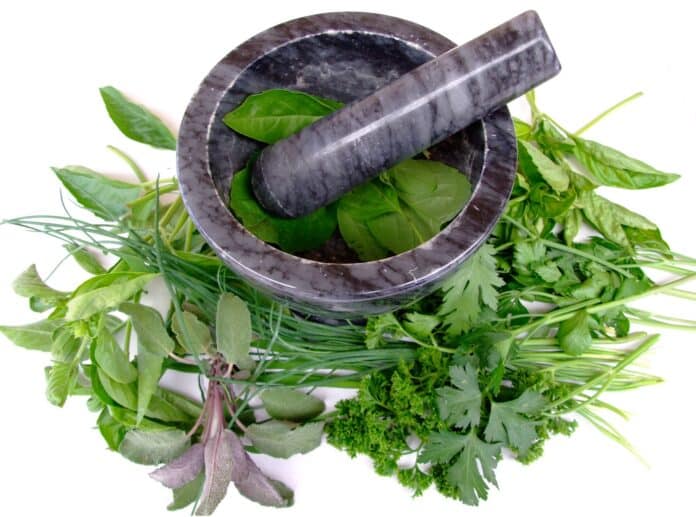Whether used as a pinch or a bunch, herbs have the power to take a dish from boring to magical

Can you imagine jalzeera without that dash of mint? Or a pizza without oregano? Herbs, fresh or dried, add unique flavour to otherwise basic dishes, meld with other herbs to form novel tastes that you can’t quite replace or replicate with any other combination and can be used to make food taste simply incredibly.
Herbs can be used to partially or wholly replace undesirable ingredients like salt, sugar or oil. A sprinkle or a sprig of herbs can add oodles of flavour and texture to otherwise bland low-fat or low-salt foods. Herbs can be used to enhance the flavour of any dish, including desserts. What’s more, herbs have anti-oxidant, immune-enhancing properties and are good for digestion too.
Key tips for cooking with herbs
Avoid adding too many kinds or too much of any one herb as sometimes the taste of the herb might overpower the taste of the main ingredient of the dish. Do not sprinkle seasoning directly from the container into a steaming pot. The rising moisture may diminish the potency of the spice or herb remaining in the jar, or may cause it to clump or spoil more quickly.
Crush the leafy herbs, such as oregano, thyme or basil, in your palm before using them for an instant release of flavour.
Most herbs are delicately flavoured and therefore should be added towards the end of the preparation of the dish.
Whole spices and bay leaves release flavour more slowly than ground or leaf form and are ideal for using in dishes with longer cooking time.

Using dried herbs
Use a dry spoon to remove the portion required.
The flavour of herbs fades with time, so discard dried herbs after 12 months. If you open a jar and can’t smell that herby aroma, it’s time to replace it!
Dried herbs are best when used with oil, butter or any other fat or water. The herbs infuse the oil or cooking liquid with flavour.
Dried herbs are more strongly flavoured than fresh. Generally one teaspoon of dried herbs equals four teaspoons of fresh herbs.
Dried herbs tend to do best if they’re added during cooking so their flavour has time to infuse the whole dish. Sometimes adding these too late might give a dusty taste and not enough flavour.
Dried whole herbs, where the leaves are still attached to their stalk, tend to have a stronger flavour than loose leaves sold in packets or jars.
You can place chopped herbs in muslin bags and add to the dish.
Dried herbs and spices should be kept in a cool, dry, and dark place. Storing them next to the stove, although convenient for cooking, is not ideal, because heat, steam and bright light destroy the flavour.

For fresh herbs
Fresh herbs are great for garnishes and they provide tonnes of flavour. They have great aromatic qualities and work very well for roasting and sautéing, or for chopping and mixing into foods such as mashed potatoes, curries, drinks, cordials and snacks.
Fresh herbs are best when used to finish a dish, like adding thyme just before a soup is done or sprinkling basil or oregano over the top of a freshly baked pizza.
Use fresh herbs in sauces, salad dressings, and other quick dishes, since dried herbs take longer to infuse flavour.
Fresh leaves should be chopped very finely. It helps to absorb more of the herb’s flavour.
To avoid wilting while in storage, snip the base of the stem of the herbs as you would flowers and put them in a glass of fresh water. Change the water every two or three days if it starts to cloud.Basil should be kept at room temperature, but a glass filled with other soft herbs such as parsley, coriander, cilantro should be kept in the fridge, loosely covered with a plastic bag.
Cooking with herbs and spices is a learning process which can be mastered with practice and you will soon be able to create the most unique and flavoursome dishes.




